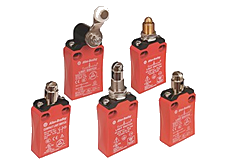Equipment Maintenance Considerations: What You Should Be Doing
Do you use machinery and equipment in your business? If so, do you have the right maintenance controls in place? The right preventative maintenance controls extend the useful life of your machines and can help your organization lean out.
After all, the cost of machine parts isn’t the only concern when a piece of equipment is out of use. Downtime, late customer orders, and halted cash flow are all side effects of improper maintenance. In this article, we’ll explore what you should be doing to keep your equipment running smoothly and efficiently.
Know Your Equipment
First, it’s important to know your equipment. What is the recommended maintenance schedule? What tasks should your employees be doing on a regular basis to increase the longevity of your machine? A great place to start is the owner’s manual that most machinery and equipment comes with. If you are purchasing used equipment, ask your salesman or look up the manufacturer and model online.
Schedule Regular Maintenance
Next, you should have regular maintenance scheduled, especially if the equipment is dependent on technology. Robots and other equipment with AI components can break more easily without the latest software being downloaded. Have your maintenance manager or another lead employee frequently check on updates.
Otherwise, consider enlisting the help of an outside maintenance company. This can be a great option if you have multiple pieces of machinery that you want regular maintenance on. Moreover, working with an outside company ensures that everything is being handled properly, from greasing the gears to downloading new software.
The usage of your machines will dictate how often you need maintenance. For example, a machine you use once a month might not need the same maintenance schedule compared to a machine that’s used daily. Regardless of the schedule, pencil dates in the calendar to stay proactive.
Avoid Band-Aid Fixes
When it comes to making repairs on your machinery and equipment, it can be easy to go with the cheapest option. However, this isn’t always the best route for your business. Putting a band-aid on the problem can lead to more frequent and costly repairs down the road. Of course, you should weigh the benefits of a more expensive fix but don’t automatically go with the cheapest option.
Instead, factor in future repair costs. By holding the problem over with a $100 part, will you cost your business $1,000 next month? Think about lost revenue from downtime and the future costs of parts and labor. Does it make sense to defer the problem or pay for a solution upfront?
About IMS Supply: IMS Supply is a leading distributor of maintenance, repair and operations (MRO) products and services with facilities in East and West Michigan and Kentucky. Through our MRO Asset Recovery Program we stock hard to find parts and supplies from thousands of different manufacturers at prices up to 70% less than MSRP. Contact us today to find out how we can help your business.



